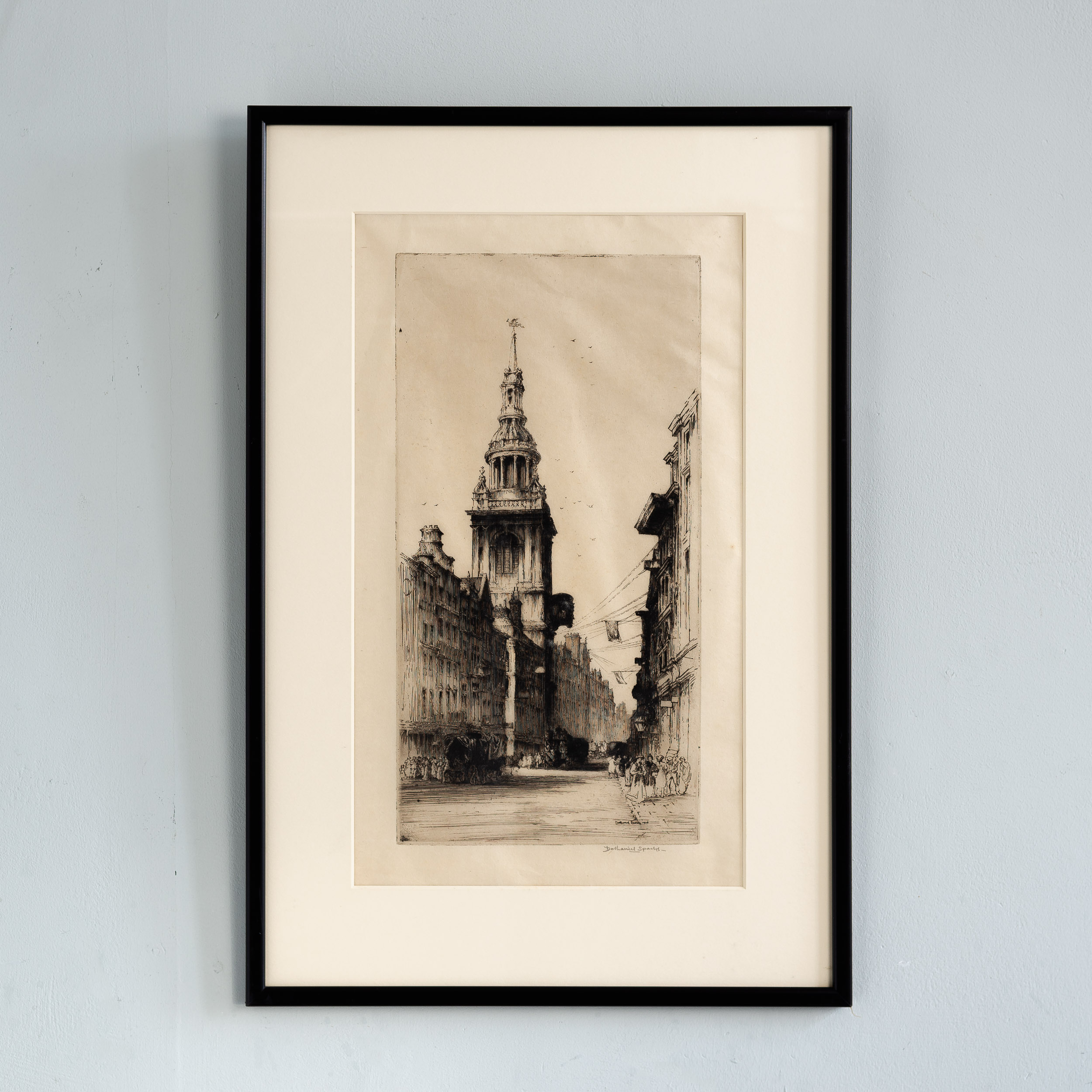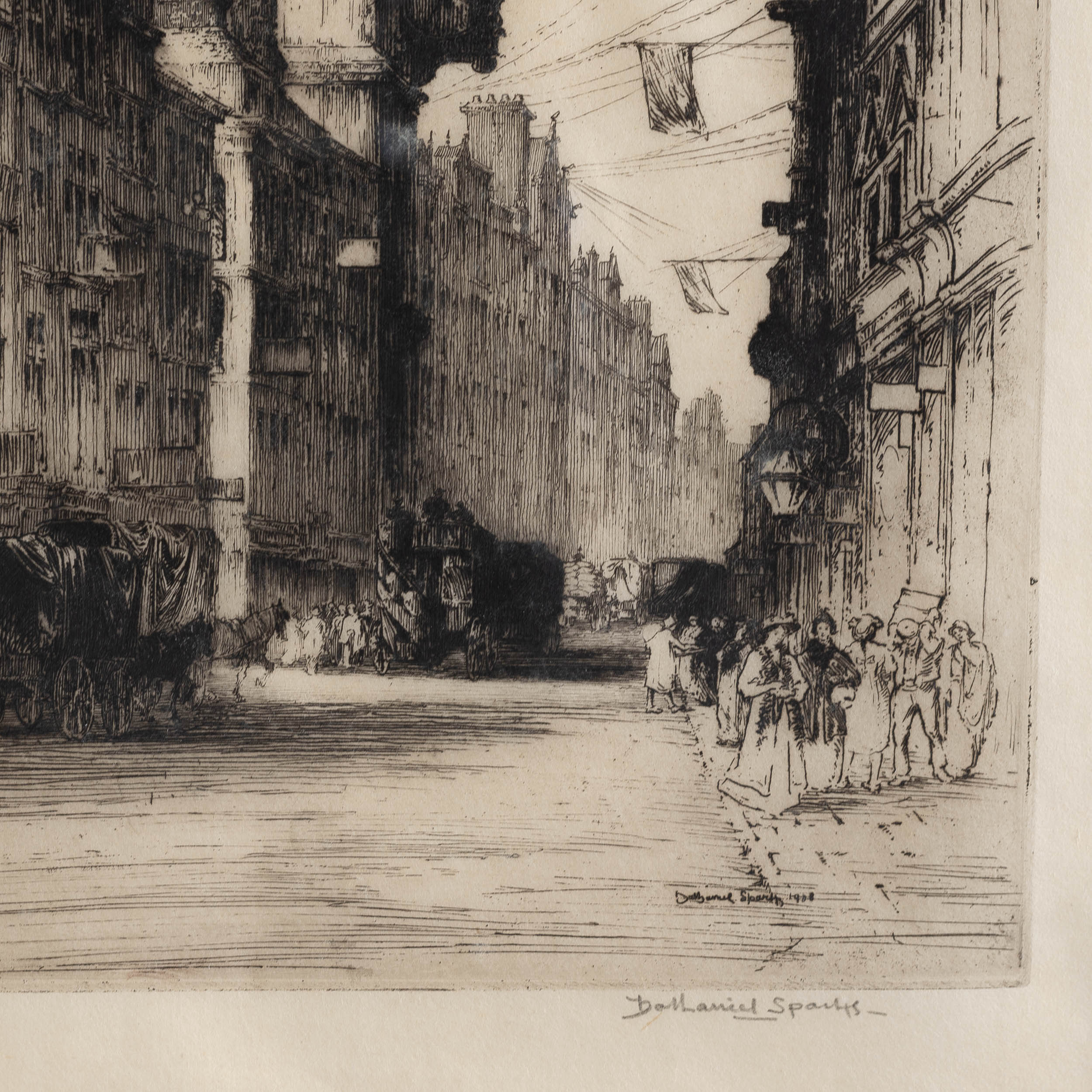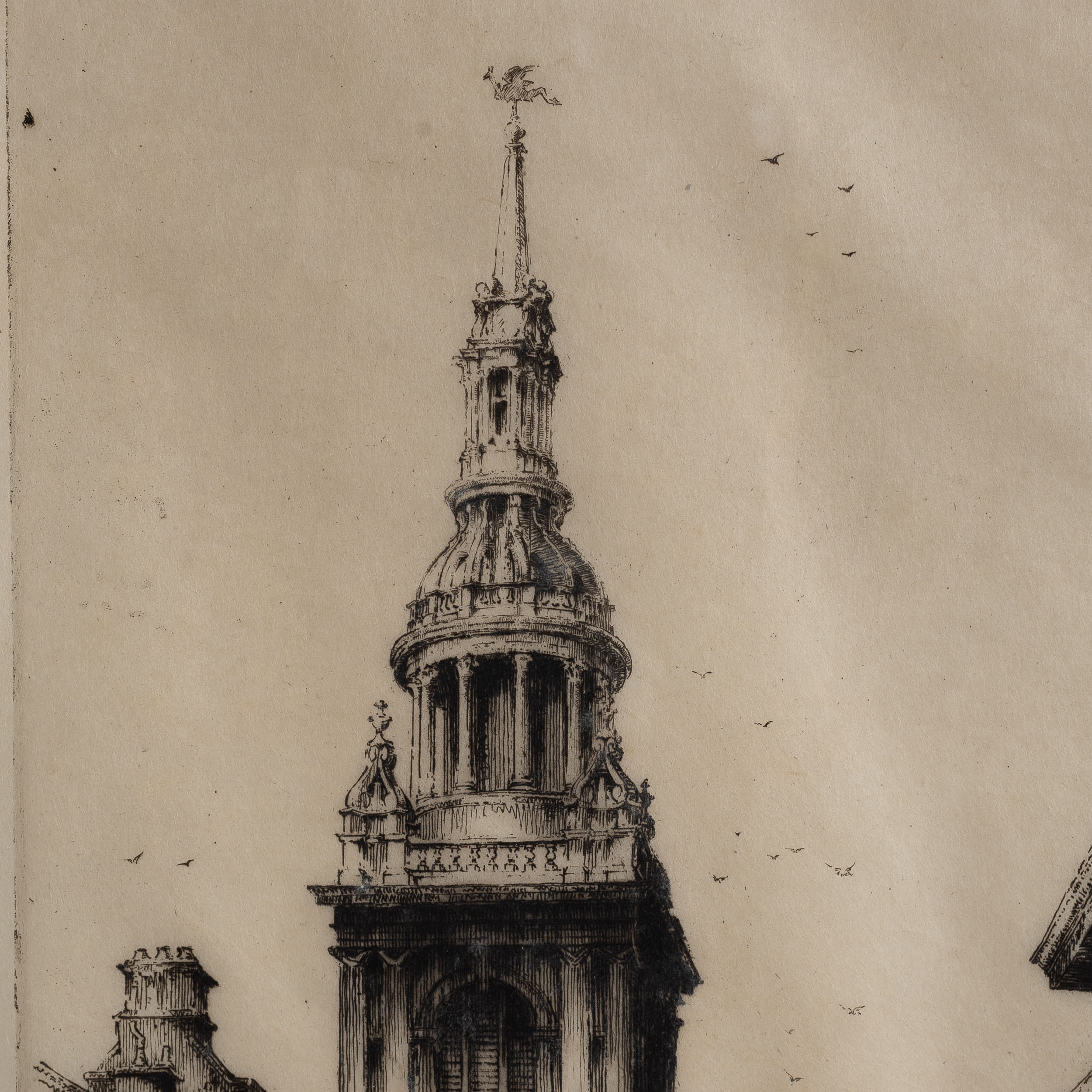Nathaniel Sparks, St Mary-le-Bow, Cheapside,
An original dry-point engraving by the artist and painter-etcher Nathaniel Sparks showing the steeple of St Mary le Bow viewed looking west up Cheapside.
Signed by the artist. Presented in a cream mount and black frame.
£570
In stock
“Nathaniel Sparks won a scholarship to The Bristol College of Art and Science at the tender age of 10, studying under R Bush, ARE (Associate of the Royal Society of Painter-Etchers & Engravers). In 1900, at the age of 20, a further scholarship brought him to the RCA (Royal College of Art) in London where Frank Short, President of the Royal Society of Painter-Etchers & Engravers, was Head of the Engraving School … During this period as a student he practised his skills and must have produced many etchings. Sadly, only a few remain. However, whilst studying he was commissioned by the famous J M Whistler to pull (print) his ‘Venice Set’ and in 1905 he received a Diploma in Decorative Painting from the RA and was made an ARE …
The next year saw the first of a long line of annual exhibits at both the RA and the RSPE (Royal Society of Painter-Etchers & Engravers) and it is interesting to note that Queen Mary purchased at least two of his prints: ‘The Shadow and the Shade’ and, in 1915, ‘Westminster Abbey seen through the Fountain’.
In 1909, he was elected a Fellow of the RSPE and won a Gold Medal for ‘Outstanding Artwork’. His success seemed assured. However the First World War intervened and in 1915 he found himself making gauges for the munitions factories, working a punishing 100 hours per week, engraving the fine calibration required for accurate machining.
With the armistice came a return to a very different civilian world of mass unemployment where the rise of photography had led to a decline in the demand for the engravers’ skills. Nathaniel never recovered from this break in his career and, although he subsequently produced many fine prints and beautiful watercolours, he faded quietly into old age and obscurity.
Perhaps the final blow was when his printing press was blown up by a German bomb in 1940. He died, lonely and without the recognition he deserved, in Somerton, Somerset in 1956″
– The Nathaniel Sparks Gallery
Recently Viewed Items
-
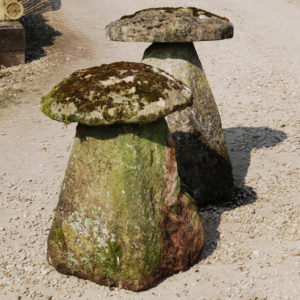
An old English staddle stone,
An old English staddle stone,
the domed top - circular in section, raised on the tapered base - square in section, and bearing moss and lichen commensurate with great age, -
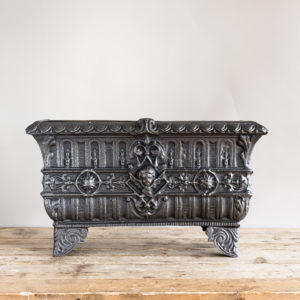
Victorian cast iron jardinière,
-
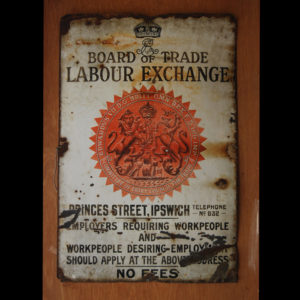
An Edward VII enamelled sign,

